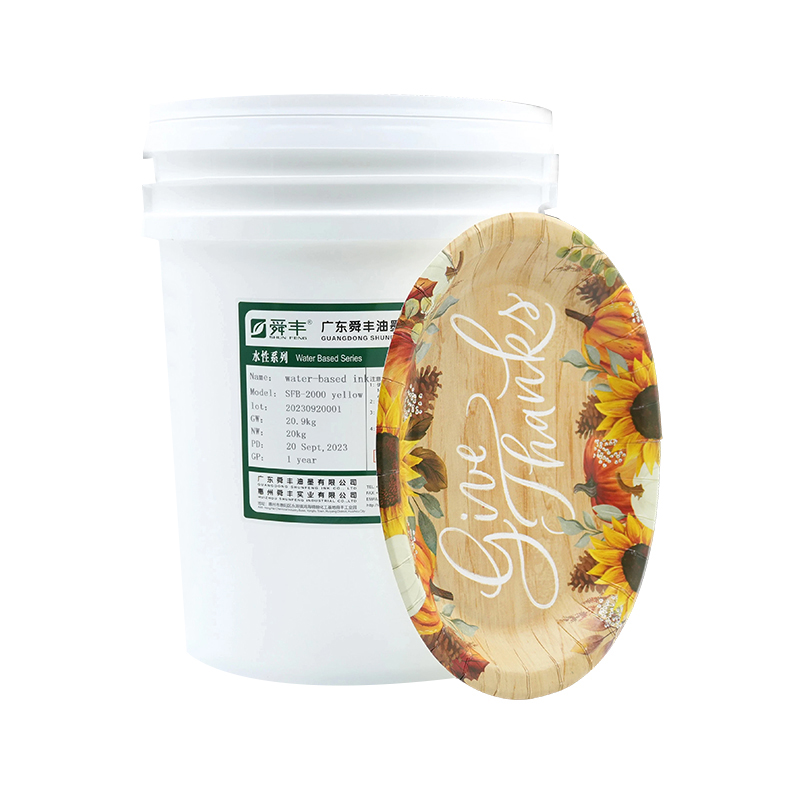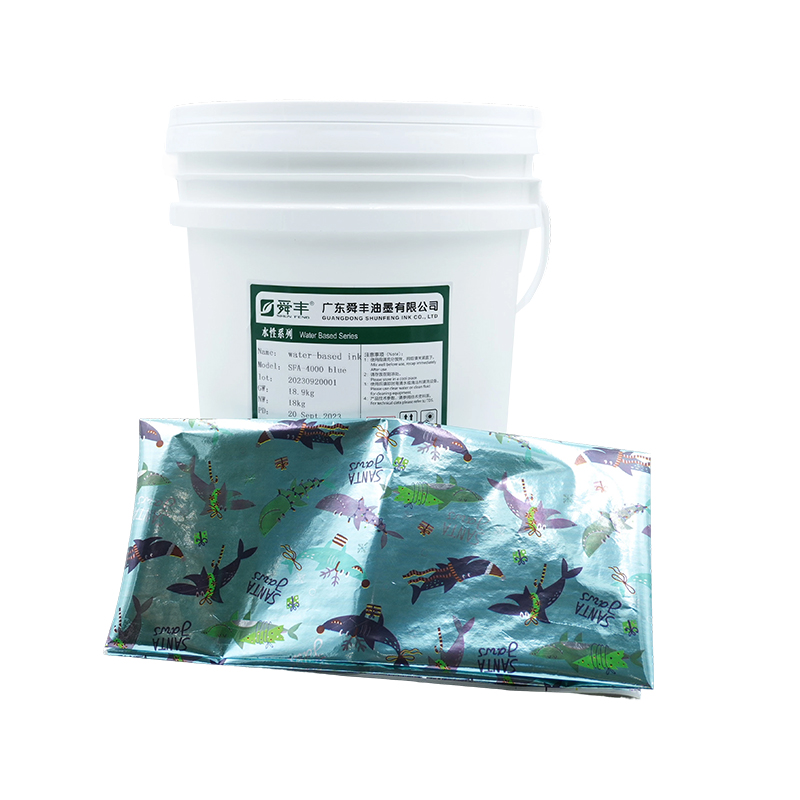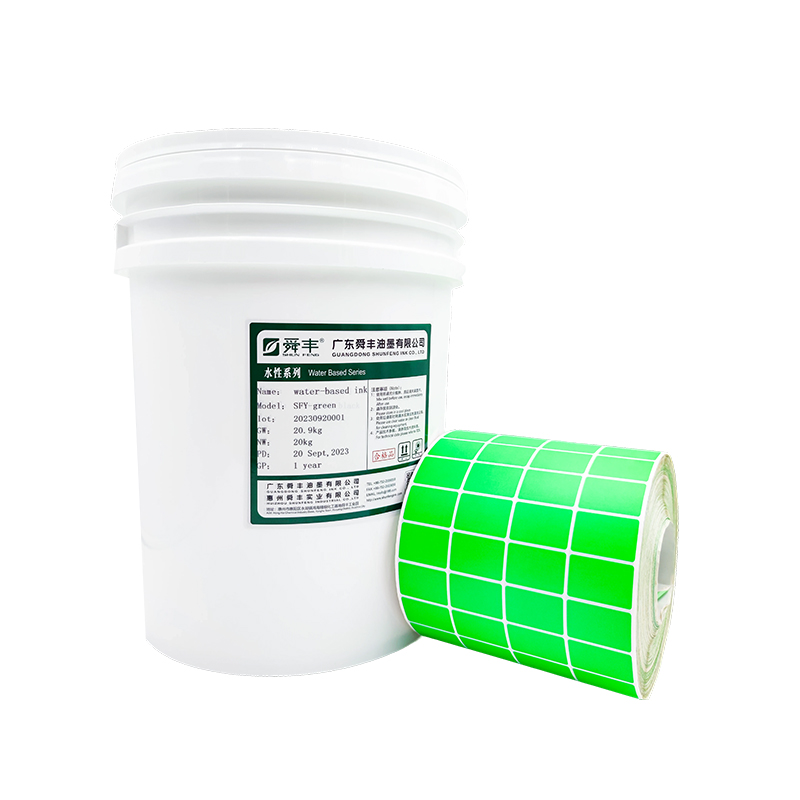How to control the printing density and hiding power of flexo water-based fluorescent ink under different anilox roller line counts?
Release Time : 2025-04-09
Flexo water-based fluorescent ink occupies an important position in the fields of food packaging and anti-counterfeiting labels due to its environmental advantages and high brightness characteristics. However, its printing density and hiding power are significantly affected by the line count of the anilox roller, and precise control is required through ink formulation, printing parameters and equipment coordinated optimization.
The line count of the anilox roller (LPI) directly affects the amount of ink transfer by changing the cell opening area and volume. High line counts (such as 800-1200 LPI) have small anilox roller cell openings and low volumes, and insufficient single ink supply, which can easily lead to brightness attenuation of fluorescent inks, and the density needs to be supplemented by high-viscosity inks or multiple printings; low line counts (such as 200-400 LPI) have large anilox roller cell openings and high volumes, and excessive single ink supply, which can easily cause ink accumulation, resulting in dot enlargement and uncontrolled hiding power. In addition, the difference in the evaporation rate of water-based inks and the water absorption of the substrate further exacerbates the problem of printing stability under different line counts.
The use of low molecular weight water-soluble acrylic resin, which has a short molecular chain and strong fluidity, can reduce the viscosity of the ink to 15-25 seconds (4# cup), which meets the fine ink supply requirements of the high-line anilox roller. At the same time, the carboxyl group in the resin reacts with amine compounds to form salts, adjusting the pH value of the ink to 8.5-9.5 to avoid the inactivation of fluorescent pigments due to acid-base imbalance.
The fluorescent pigment is dispersed to the nanometer level (average particle size ≤100nm) through sanding or ultrasonic technology, which significantly improves the hiding power. For example, when the particle size is reduced from 200nm to 80nm, the ink hiding power can be increased by 40%, while reducing the dot expansion rate to less than 8%.
Add 0.5-1.0% of a retarder (such as polyvinyl alcohol) to slow down the drying speed of the ink and avoid blocking the anilox roller; use 0.2-0.5% of a defoamer (such as silicone) to inhibit the generation of bubbles during printing and ensure uniform ink transfer.
For high-line anilox rollers, the printing pressure needs to be reduced to 1.5-2.0 bar to prevent the deformation of dots caused by excessive extrusion of ink; for low-line anilox rollers, the pressure needs to be increased to 2.5-3.0 bar to ensure that the ink fully fills the cells.
Water-based inks dry slowly, so it is necessary to reduce the printing speed (such as from 150m/min to 100m/min) to extend the contact time between the ink and the substrate and improve the hiding power.
When using hot air drying, the temperature needs to be adjusted according to the number of lines of the anilox roller. When printing with a high-line anilox roller, the drying temperature is controlled at 60-70℃ to prevent the ink from drying too quickly and causing the dots to become hollow; when printing with a low-line anilox roller, the drying temperature can be increased to 80-90℃ to accelerate the curing of the ink.
For high-line anilox rollers, laser engraving technology is required to ensure consistent cell depth (such as 35μm) and reduce ink transfer fluctuations; for low-line anilox rollers, electronic engraving technology is preferred to improve the volume utilization rate of the cells.
The scraper angle is adjusted from 65° to 75°, which can reduce the contact area between the scraper and the anilox roller and reduce ink residue; the scraper pressure is adjusted according to the number of lines, and the pressure is reduced to 2.0-2.5bar at high line counts and increased to 3.0-3.5bar at low line counts.
Substrate water absorption regulation: For highly absorbent substrates (such as uncoated paper), surface coating treatment is required before printing to reduce the water absorption rate to less than 5% to avoid excessive ink penetration and density reduction.
Introduce online densitometers and hiding power testers to monitor printing density (OD value) and hiding power (ΔE value) in real time. When the test value deviates from the standard range, the system automatically adjusts the ink viscosity, printing pressure or drying temperature to achieve closed-loop control. For example, when the OD value is lower than 1.8, the system automatically increases the ink viscosity to 20 seconds (4# cup) and reduces the printing speed to 120m/min.
With the development of Industry 4.0, the regulation of flexo water-based fluorescent ink will evolve towards intelligence and sustainability. By using AI algorithms to predict the optimal process parameters under different line counts, combined with bio-based resins and degradable pigments, a double breakthrough in environmental protection and performance can be achieved. For example, using soybean oil-based resin to replace part of acrylic resin can reduce VOCs emissions by 30% while maintaining fluorescent brightness and hiding power.
The printing density and hiding power control of flexo water-based fluorescent ink requires coordinated optimization from multiple dimensions such as ink formulation, printing parameters, equipment adaptation and substrate pretreatment. By accurately matching the line count of the anilox roller and the process parameters, combined with an intelligent monitoring system, the printing quality can be significantly improved, and flexographic printing technology can be promoted to develop in the direction of high efficiency and environmental protection.







